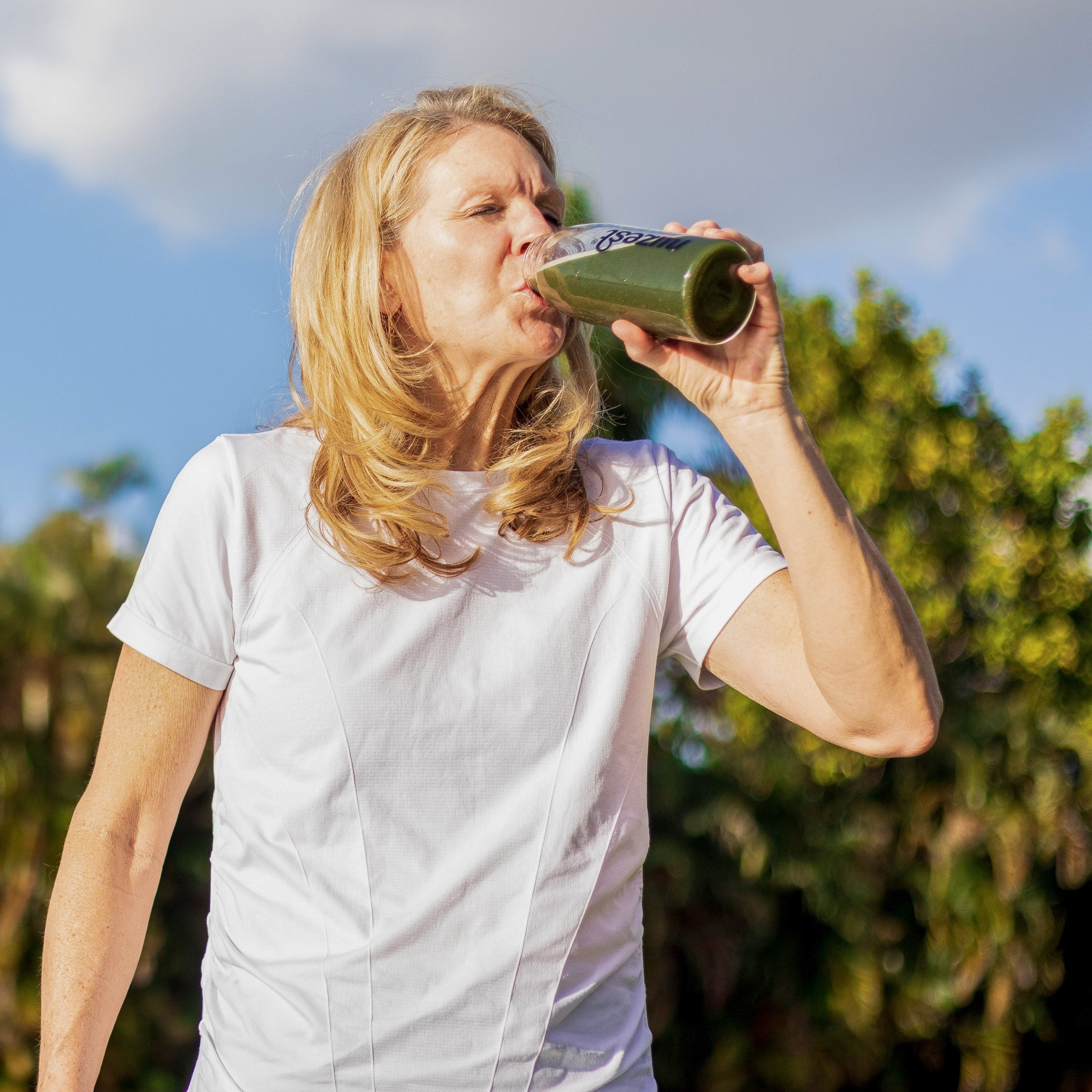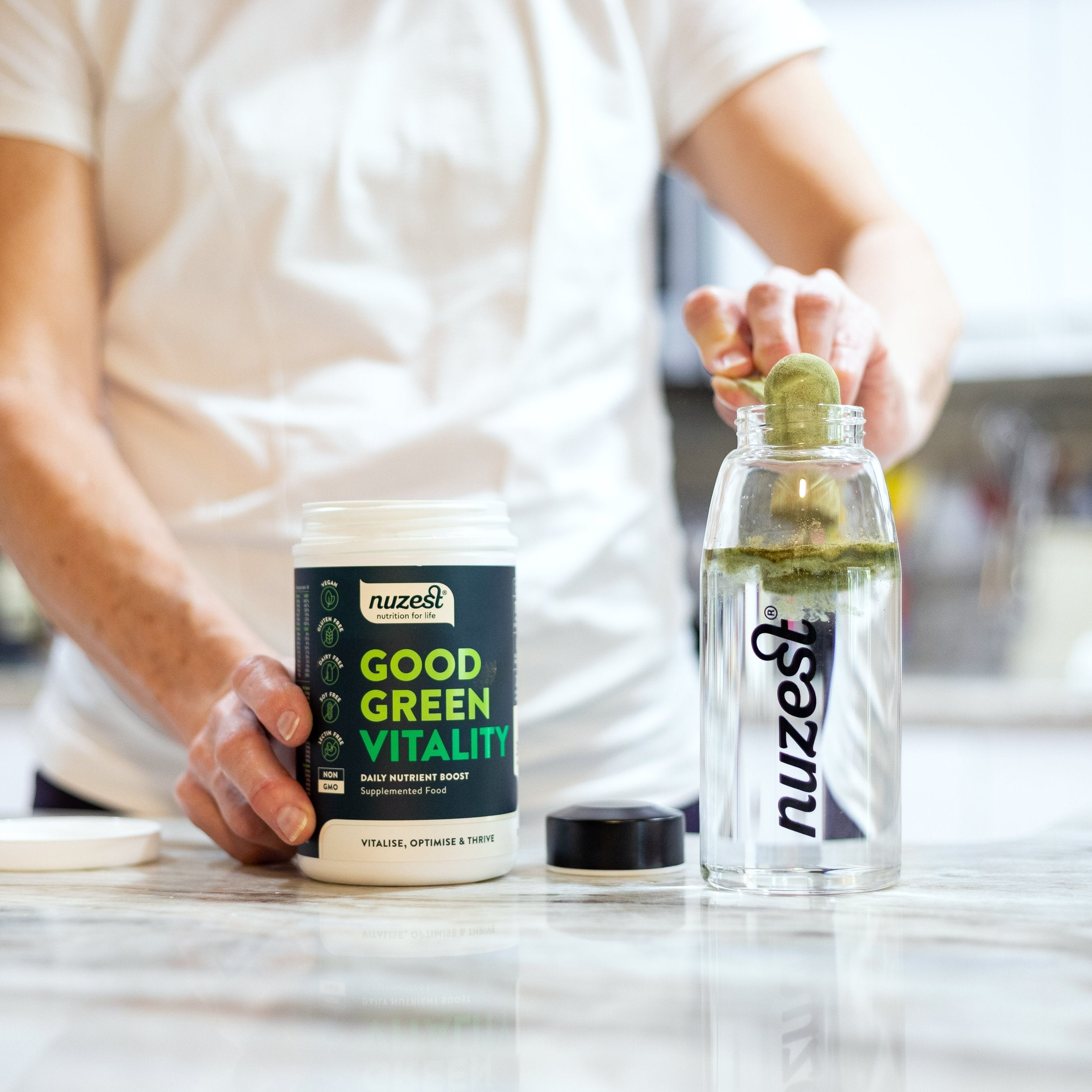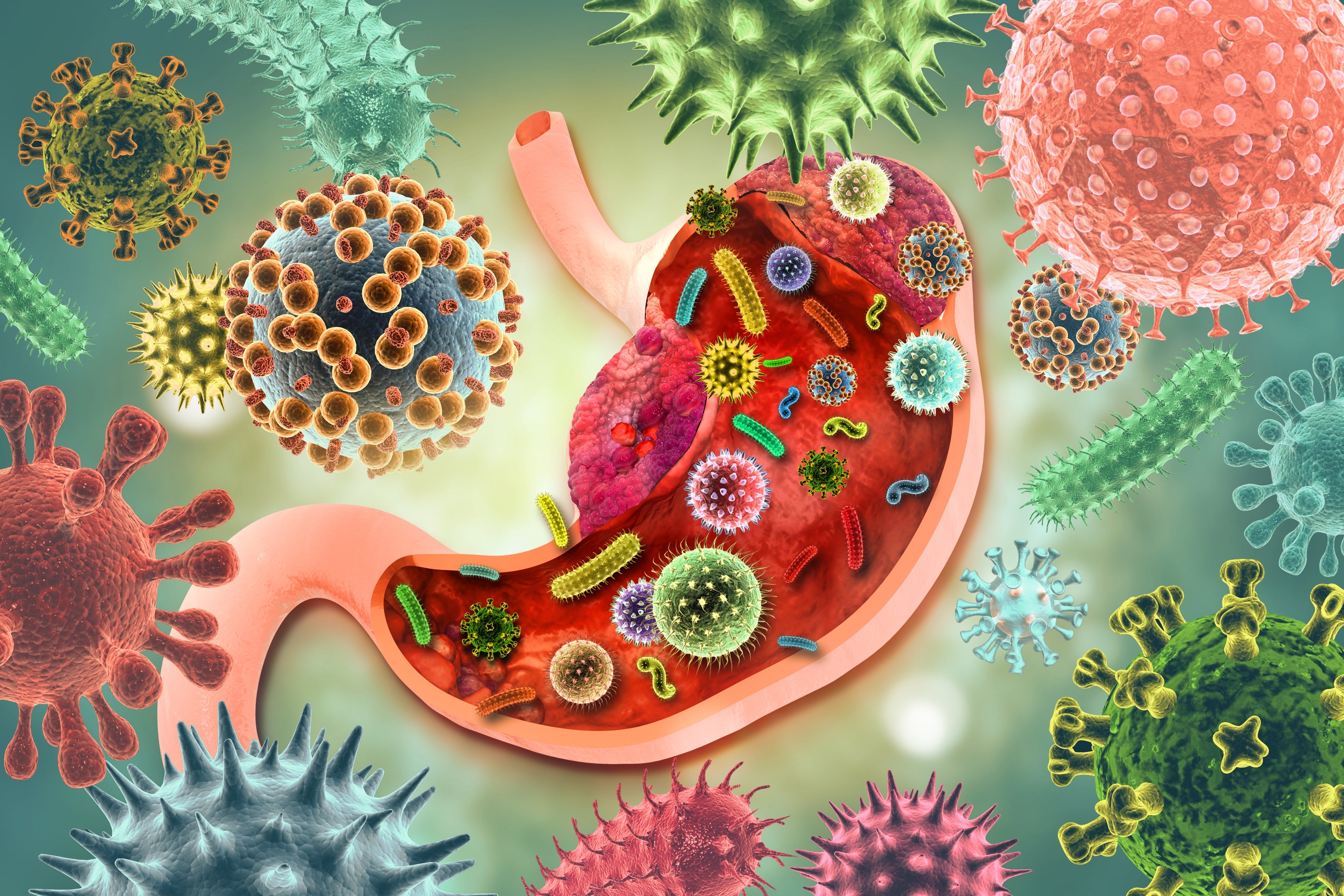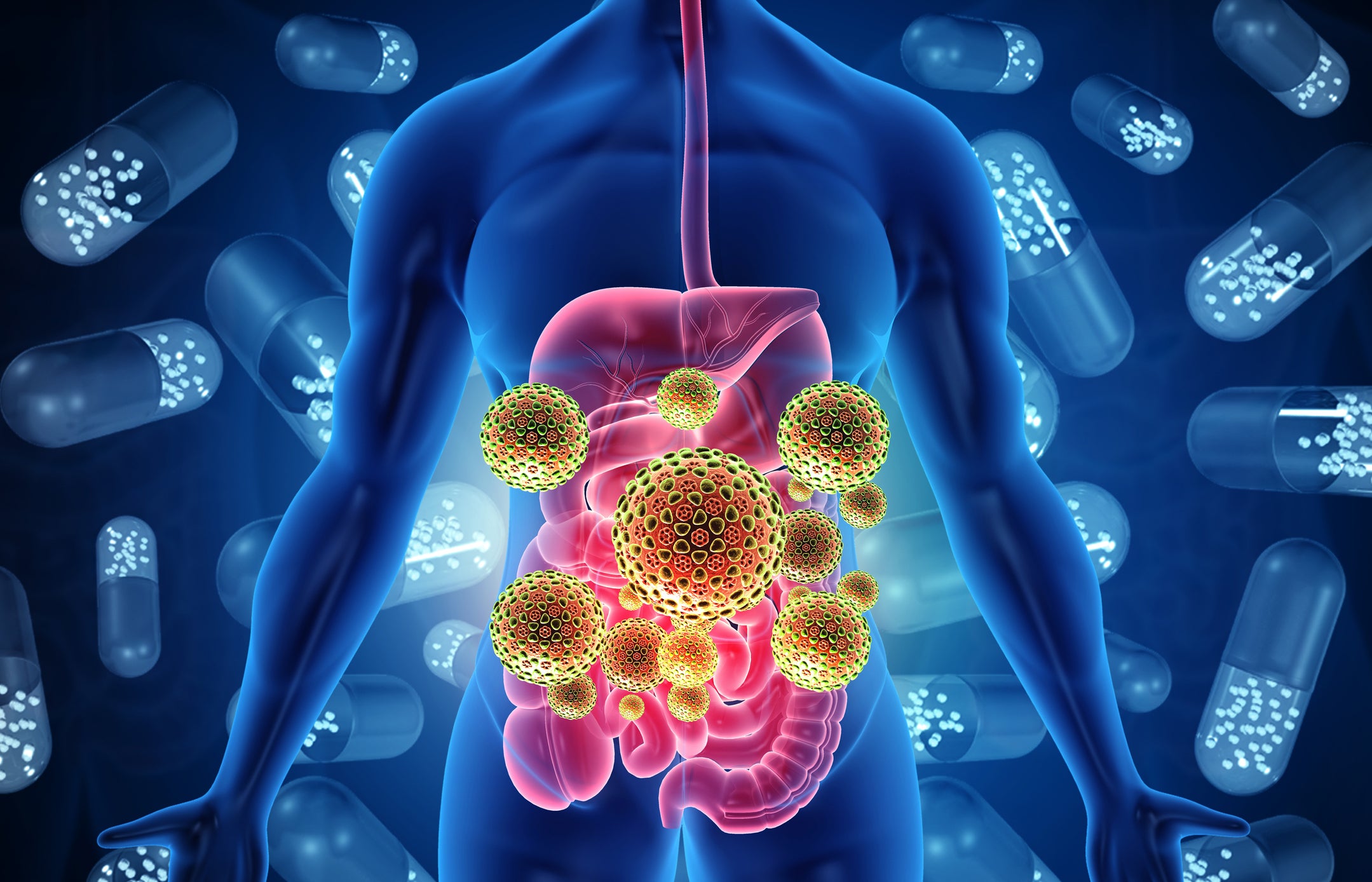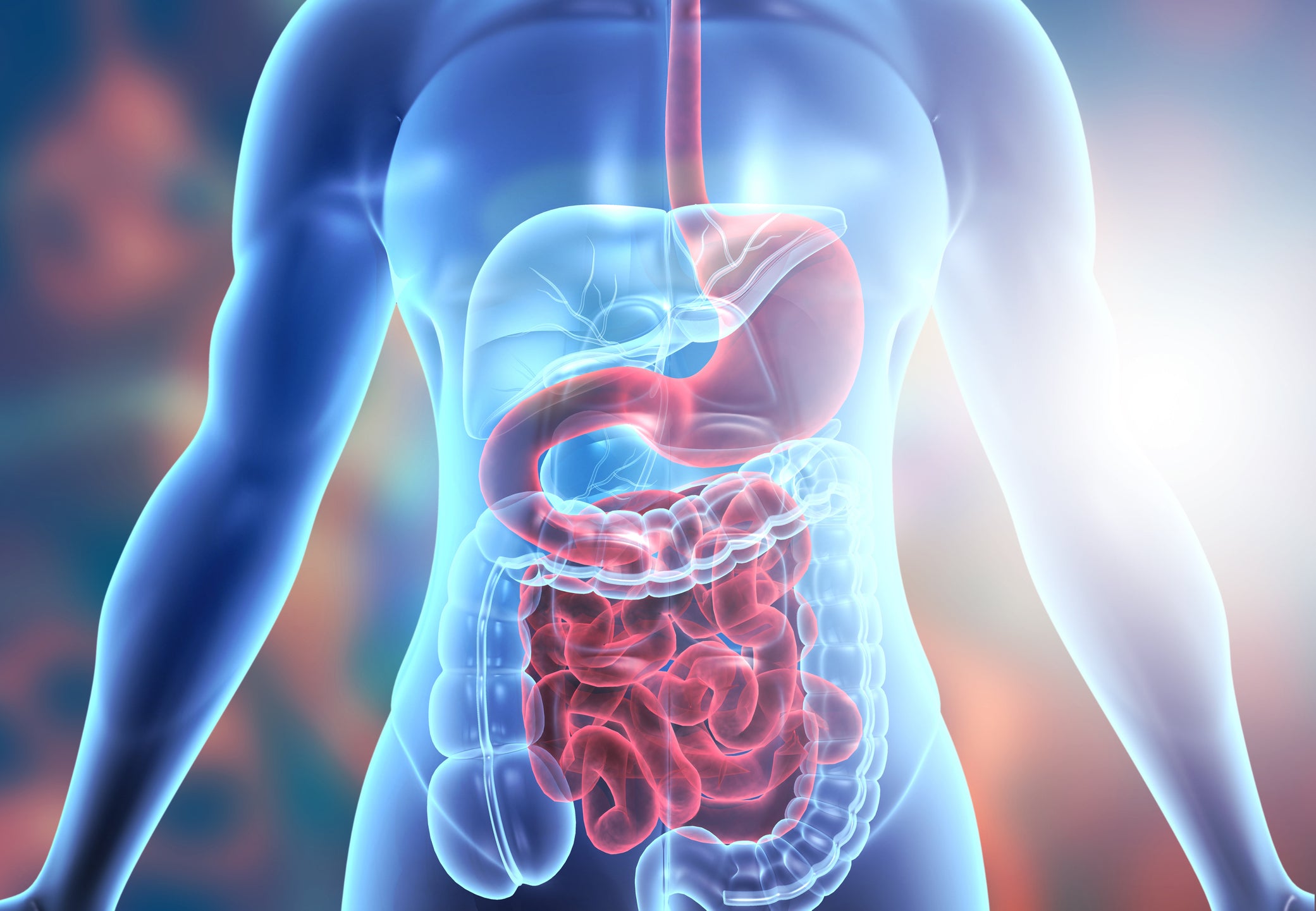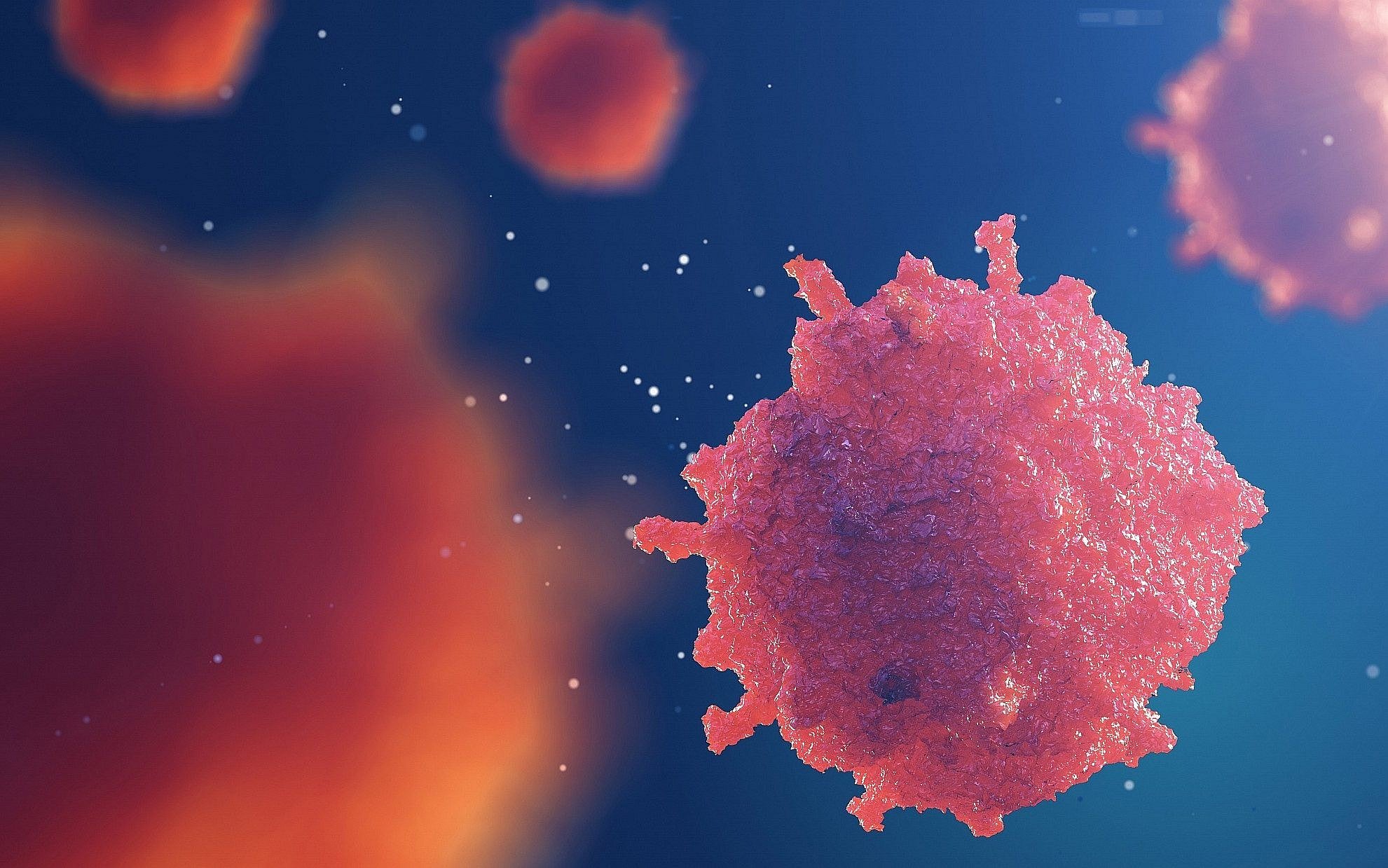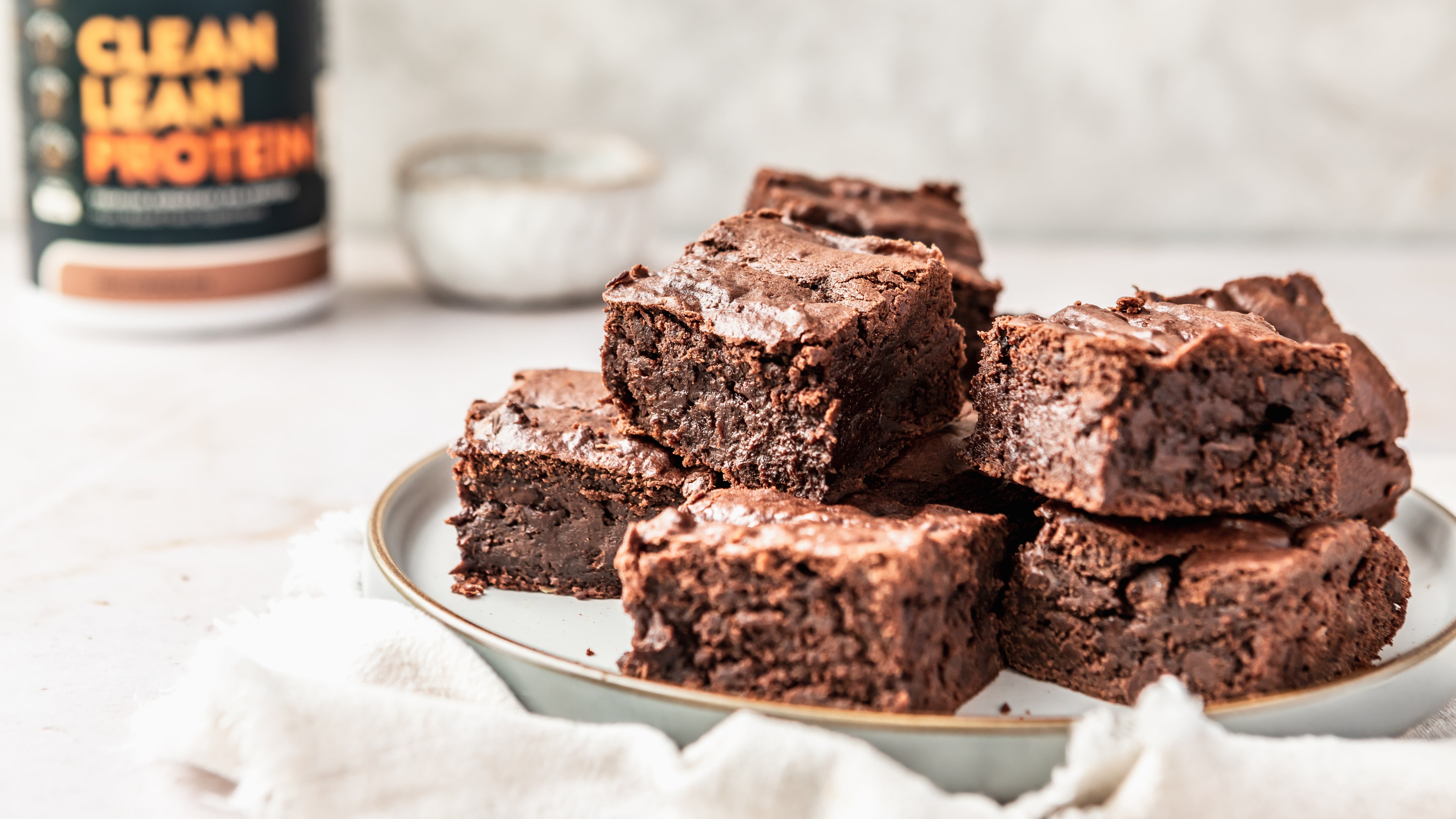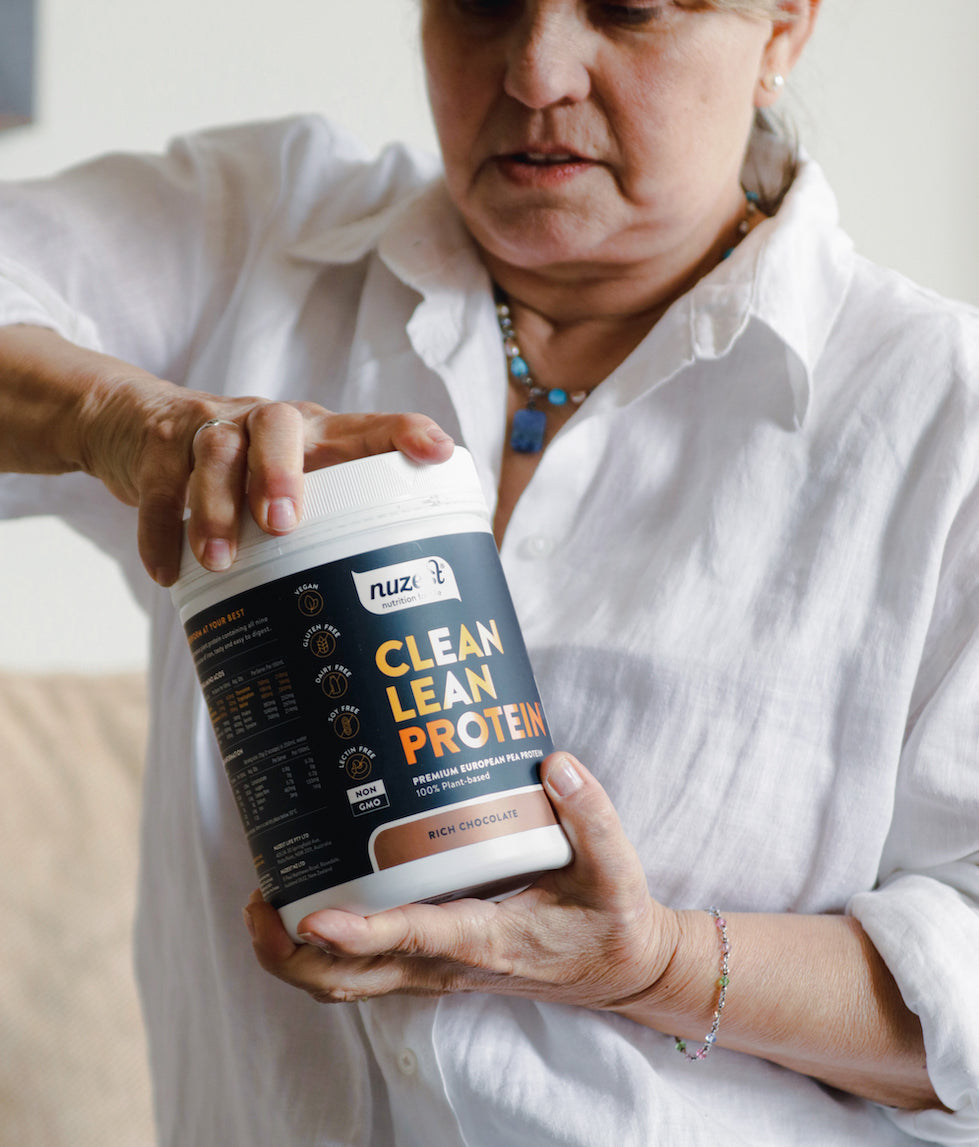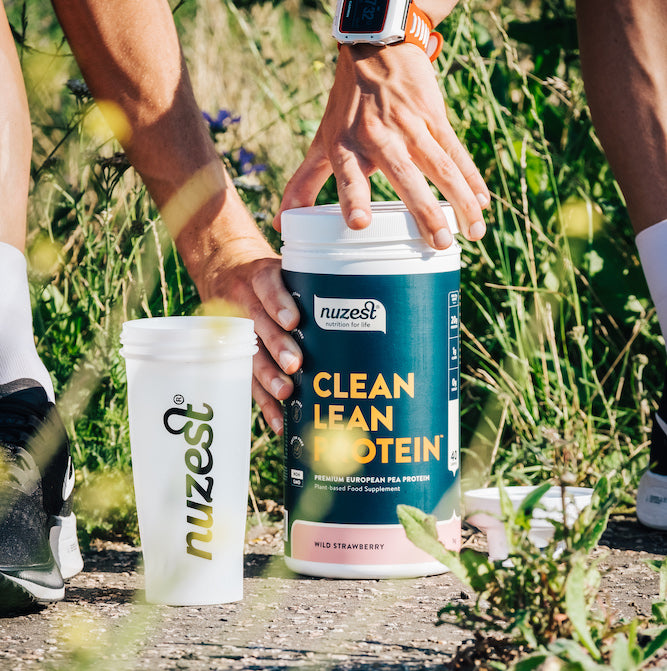Author: Megan Jones (Adv.Dip.NutMed, BHsc.NutMed)
As we approach middle age, some of us may start to notice some unexpected weight gain, or an unwanted expanding waistline – and naturally, we might assume that a sluggish metabolism is to blame.
In fact, for years, the assumption has been that our metabolism slows down as we get older, with studies showing that many individuals in mid-life report weight gain, particularly around the middle.[1] Although this weight gain may be due to a number of contributing factors, new evidence suggests that, surprisingly, a slowing metabolism is not one of them![2]
This brings us to the even better news, and that is that the myth surrounding our metabolism peaking in our 20s and declining consistently afterwards has been busted! For the majority of us, managing our weight during mid-life is actually within our control.
Armed with this knowledge, and understanding now that we have the power to control, to maintain and even increase our metabolism as we get older, let’s explore all things metabolism.
Read on to learn how we can support our metabolism through lifestyle measures and dietary modifications, and how a simple daily serve of our Good Green Vitality, which has been designed to support all 11 body systems, can provide us with the necessary nutrients to keep our metabolism running smoothly, and our energy and vitality at optimal levels. We have also provided you with our top 5 nutrients to support a healthy metabolism as we age.
Key takeaway points:
- Contrary to popular belief, our metabolism does not slow down until age 60.14
- We actually possess the power to control, maintain and increase our metabolism as we age.2
- Factors such as height, weight, age and gender can affect our body’s energy requirements.9 10
- Reduced fat oxidation and a decrease in physical activity as we age both contribute to an increase in fat storage and subsequent weight gain.24
- Low-grade chronic inflammation associated with ageing is known as “inflammageing” and is a strong risk factor for multiple diseases.37
What is metabolism?
“Metabolism” refers to the vital chemical and physical processes that occur continuously within our bodies at a cellular level,[3] all which keep us functioning normally in order to stay alive.[4] These processes include breathing, nerve function, the building and repairing of cells, our circulation, eliminating waste, and even the breakdown and assimilation of nutrients from food and drinks, that are then converted to energy.[5]
Our metabolism is complex, yet put simply it has two parts that are closely interlinked and carefully regulated by our bodies to make sure they remain in balance:
- Catabolism – This refers to the breakdown of carbohydrates, proteins, and dietary fats into their simpler forms, which can then be used to provide energy and the basic building blocks needed for growth and repair.[6]
- Anabolism – This refers to the part of metabolism during which our body is built or repaired. Anabolism requires energy that ultimately comes from our food. When we eat more than we need for daily anabolism, the excess nutrients are typically stored in our body as fat.[7]
During this energy exchange, some energy escapes - in the form of heat, and it is our body’s metabolic rate which shows how fast our body produces heat and therefore how quickly it is burning fuel.[8]
What is meant by our metabolic rate?
The minimum amount of energy required to carry out basic biological processes while resting is known as our basal metabolic rate, or BMR. This can be calculated by considering factors such height, weight, age, gender, and is often also referred to as our resting metabolic rate, or RMR. [9] [10]
Did you know? One of the largest determinants for our BMR is actually our body surface area.[11] Put simply, the more cells (including fat cells) in our body, the busier these cells are, and the more fuel we require.
For those of us with a desk job, or who are generally pretty sedentary with an average body composition, our BMR typically accounts for only about 50% to 70% of total energy output.[12] It doesn’t take into account those incidental movements, like housework, walking the dog, even just thinking or fidgeting, also known as Non-Exercise Activity Thermogenesis or NEAT.[13]
Total energy expenditure (TEE), on the other hand, is a combination of BMR, plus energy expended during physical activities and even energy used during digestion (which is also known as dietary thermogenesis).13
The latest data from human studies indicate that the total and basal expenditure and fat-free mass were surprisingly all stable from ages 20 to 60, regardless of sex. Adjusted TEE and RMR remained stable even during pregnancy, and any increase in unadjusted energy expenditure during pregnancy was accounted for by the increase in body mass.2
So, what this data suggests, and contrary to what we once thought is that our metabolisms don’t really start to decline until after age 60, and the slowdown is gradual, at only 0.7% a year. So, an elderly person in their 90s requires around 26% fewer calories each day than someone in midlife. Essentially, we burn calories as efficiently at 55 as we do at 25![14]
Factors that affect our BMR
We know certain factors such as age, sex, body mass, body composition, physical activity, and illness affect energy expenditure, however the latest comprehensive study, which included global data from more than 6400 subjects2, revealed surprising information about the timing of age-related metabolism changes over our lifespan. According to Pontzer et al., (2021) there is no evidence for metabolism slowing in middle age. What this means is that with some basic dietary and lifestyle modifications, we can in fact support an increase in our metabolism - right when we thought things were slowing down!
Modifiable and non-modifiable factors affecting our BMR include:
Body Composition: Individuals with a higher percentage of lean muscle mass generally have a higher BMR. Lean muscle tissue burns kilojoules more rapidly than body fat. In fact, fat cells are ‘sluggish’ and burn far fewer kilojoules than most other tissues and organs of the body.
Gender: Men typically have a higher BMR than women due to differences in muscle mass and hormonal profiles.[15]
Weight: Heavier individuals usually have a higher BMR because it takes more energy output to maintain a larger body.16
Age: BMR tends to decrease with age, as muscle mass tends to decrease and fat percentage may increase but also due to hormonal and neurological changes.16
Height: Taller individuals may have a higher BMR because more energy is needed to support a larger surface area.[16]
Growth: Infants and children have higher energy demands per unit of body weight due to the energy demands of growth and the extra energy needed to maintain their body temperature.[17]
Diet and Nutrition: Starvation or unhealthy caloric-restricted diets can lower BMR, while regular meals and adequate nutrition support a healthy metabolism. Crash dieting, starving or extreme fasting - eating too few kilojoules - encourages the body to slow the metabolism to conserve energy. BMR can drop by up to 15 per cent and if lean muscle tissue is also lost, further reducing BMR. Dietary deficiencies also influence our BMR – for example, a diet low in iodine can reduce thyroid function which slows the metabolism.[18]
Genetic predisposition: Our metabolic rate may be partly decided by our genes and can contribute to individual variations in metabolism.[19]
Hormonal and nervous controls: BMR is heavily influenced by the nervous and hormonal systems. Hormonal imbalances can influence how quickly or slowly the body burns kilojoules. Thyroid hormones, such as thyroxine, play a crucial role in regulating metabolism. Imbalances can affect our BMR.[20]
Body Temperature: BMR can be influenced by body temperature - illness or certain medical conditions may impact this if temperature is very low or very high. The body then has to work harder to maintain its normal body temperature, which increases the BMR.[21]
Infection or illness: BMR increases because the body has to work harder to build new tissues and to create an immune response.[22]
Physical Activity: Regular physical activity, especially strength training, can increase muscle mass and boost our BMR.16
Drugs: Like caffeine or nicotine, can increase the BMR.16
What really happens to our metabolism as we age?
According to recent findings published in Science, our metabolism reaches its peak much earlier in life and slows down much later than we previously thought.2
Despite the latest findings however, ageing and metabolism are still inextricably linked. In fact, many age-related changes in body composition, including increased central adiposity (that unwanted belly fat) and progressive loss of muscle mass and strength (“sarcopenia”), all have underpinnings in the fundamental ageing processes.[23]
Since these age-related changes are exacerbated by a sedentary lifestyle, the good news is they can be in part prevented by maintenance of physical activity.
Did you know? The two most likely reasons for weight gain as we approach middle age are not due to a slowing metabolism, but in fact to reduced fat oxidation (the body gets less of its energy from fat stores) and less physical activity.[24]
Co-author behind this latest research, Herman Pontzer, states that people's intuitions about their metabolic rates as they age don't have any real connection to their actual rate of energy expenditure. He suspects that what people experience and call metabolism is not their metabolism but their energy levels - their feeling of vitality - or how much weight they put on.24
Another study comparing women aged 21-35 with women ages 50-72 showed that when the older women engaged in regular exercise, they in fact avoided the dreaded age-related metabolic slowdown.[25]
Inflammageing, on the other hand, which is a subtle but chronic low-grade inflammation that appears to increase as we age, is not directly linked to our metabolism yet results from combined genetic, epigenetic and metabolic dysfunction.[26] Since chronic inflammation can trigger a variety of common non-communicable diseases that appear to manifest with age (such as Alzheimer’s disease, arthritis, cancer, heart disease, and type 2 diabetes), by managing it through healthy dietary and lifestyle measures we can slow or even avoid the progression of these conditions.[27]
Furthermore, our sleep quality and duration are also often negatively impacted as we approach or find ourselves in midlife. Many of us are juggling work responsibilities alongside our family and social lives which can both reduce our sleep time and have a detrimental effect on our sleep quality. Since chronic sleep deprivation can lead to weight gain, by not only increasing hunger hormones and calorie intake but decreasing satiety hormones and energy levels, weight maintenance or loss can prove even more challenging during this time.[28]
So, with metabolism, inflammageing and sleep deprivation as we age in mind, let’s take a look at the top 5 nutrients we recommend to support a healthy metabolism as we approach midlife, and as we head into our golden years:
- B vitamins
Ensuring a sufficient intake of B vitamins is key when it comes to metabolism support. These vitamins play essential roles in not only energy metabolism, DNA synthesis, and the proper functioning of the nervous system. They are also vital for maintaining a healthy cardiovascular system by modulating homocysteine levels. Studies indicate that B vitamins can significantly impact mood and reduce the physiological response to stress, while helping our bodies to convert the food we eat into energy to provide us with the energy and vitality we require to partake in physical activity and feel young in body and mind! While B vitamins can be obtained from foods like peas, nuts, leafy greens, whole grains, and liver, a convenient way to ensure a comprehensive and potent supply of these vitamins for optimal health is through a daily dose of Good Green Vitality![29] [30]
- Vitamin C
Serving as a potent antioxidant, vitamin C helps to shield our cells from oxidative stress and harm induced by free radicals – such as those associated with inflammageing. Vitamin C helps reduce the risk of chronic diseases that are linked to ageing, as oxidative stress[31] – which slows down our metabolic rate - is implicated in their progression. Did you know that our Good Green Vitality contains 400mg of Vitamin C per serve?
- Essential fatty acids
Some studies suggest that essential fatty acids, particularly omega-3s, may contribute to weight management by influencing factors such as appetite and fat metabolism.[32] They are particularly essential for brain health, in supporting cognitive function and helping to reduce the risk of age-related cognitive decline and neurodegenerative diseases.[33] Omega-3 fatty acids have potent anti-inflammatory properties and can help regulate inflammation in the body – this chronic inflammation can negatively impact metabolism and is associated with inflammageing and many age-related diseases.[34] Just 1 daily serve of Good Green Vitality can help in achieving significantly higher levels of Omega-3 and Omega-6 fatty acids due to the flaxseed, spirulina, red marine algae, kelp and alpha-lipoic acid content. It’s also important to note that our bodies cannot produce essential fatty acids on their own, so they must be obtained through diet or supplements.
- Magnesium
Magnesium is a vital mineral that plays several roles in supporting metabolism, and its significance becomes even more pronounced as we age.[35] Magnesium is a co-factor for various enzymes involved in energy metabolism and plays a crucial role in the conversion of food into energy. This process is essential for the proper functioning of cells and tissues, and magnesium is directly involved in the activation of ATP (adenosine triphosphate)[36] - the body's primary energy currency. While chronic inflammation is associated with various metabolic disorders, magnesium exhibits anti-inflammatory properties. These can help mitigate inflammation, thereby positively influencing metabolic health and associated inflammageing.
Since stress can significantly impact metabolism, particular attention must be paid to ensure optimal levels of magnesium are reached – by diet and also supplementation. This is because magnesium plays a crucial role in supporting our stress response by acting as a cofactor for enzymes involved in the synthesis of neurotransmitters and hormones that regulate stress. While magnesium can be found in food sources such as leafy green vegetables, nuts and seeds, whole grains, legumes, seafood and even dark chocolate, our Good Green Vitality can give you a boost as well, containing 100mg of magnesium per serve!
- Protein
Adequate protein intake plays a pivotal role in reducing the risk of developing chronic diseases. Protein is fundamental in maintaining and building lean muscle mass, which, in turn, helps regulate blood sugar levels and metabolism. Protein-rich foods like lean meats and poultry, eggs, lentils and legumes promote satiety, aiding in weight management and reducing the risk of chronic lifestyle diseases like that are associated with excess body weight. If you are looking to improve your daily protein intake, just 2 scoops of our Clean Lean Protein provides 20g of plant-based European pea protein to your meal or snack!
References:
- https://pubmed.ncbi.nlm.nih.gov/23638485
- https://www.science.org/doi/10.1126/science.abe5017
- https://pubmed.ncbi.nlm.nih.gov/31536296/
- https://pubmed.ncbi.nlm.nih.gov/32830223/
- https://www.health.harvard.edu/blog/surprising-findings-about-metabolism-and-age-202110082613
- https://pubmed.ncbi.nlm.nih.gov/12107377/
- https://www.ncbi.nlm.nih.gov/pmc/articles/PMC7545035/
- https://www.ncbi.nlm.nih.gov/pmc/articles/PMC8326120/
- https://www.ncbi.nlm.nih.gov/pmc/articles/PMC4535334/
- https://www.betterhealth.vic.gov.au/health/conditionsandtreatments/metabolism
- https://pubmed.ncbi.nlm.nih.gov/31262787/
- https://www.health.harvard.edu/blog/surprising-findings-about-metabolism-and-age-202110082613
- https://www.ncbi.nlm.nih.gov/books/NBK279077/
- https://www.ncbi.nlm.nih.gov/pmc/articles/PMC4728642/
- https://my.clevelandclinic.org/health/body/21893-metabolism
- https://pubmed.ncbi.nlm.nih.gov/9683398/
- https://pubmed.ncbi.nlm.nih.gov/8361073/
- https://pubmed.ncbi.nlm.nih.gov/16304580/
- https://www.ncbi.nlm.nih.gov/pmc/articles/PMC3536993/
- https://www.ncbi.nlm.nih.gov/books/NBK500006/
- https://pubmed.ncbi.nlm.nih.gov/18461599/
- https://www.ncbi.nlm.nih.gov/pmc/articles/PMC5075257/
- https://www.ncbi.nlm.nih.gov/pmc/articles/PMC9374375/
- https://www.ncbi.nlm.nih.gov/books/NBK221834/
- https://pubmed.ncbi.nlm.nih.gov/9329340/
- https://www.sciencedirect.com/topics/biochemistry-genetics-and-molecular-biology/inflammaging
- https://www.ncbi.nlm.nih.gov/pmc/articles/PMC3340492/
- https://www.ncbi.nlm.nih.gov/pmc/articles/PMC3619301/
- https://lpi.oregonstate.edu/mic/health-disease/high-homocysteine
- https://www.ncbi.nlm.nih.gov/pmc/articles/PMC7019700/
- https://www.ncbi.nlm.nih.gov/pmc/articles/PMC5927356/
- https://www.ncbi.nlm.nih.gov/pmc/articles/PMC3257626/
- https://www.ncbi.nlm.nih.gov/pmc/articles/PMC7551800/
- https://pubmed.ncbi.nlm.nih.gov/28900017/
- https://www.ncbi.nlm.nih.gov/pmc/articles/PMC7912123/
- https://www.ncbi.nlm.nih.gov/pmc/articles/PMC4455825/
- https://www.ncbi.nlm.nih.gov/pmc/articles/PMC6146930/


